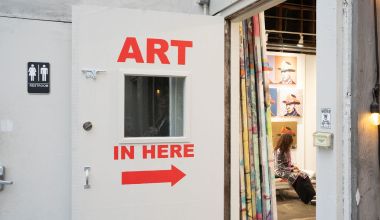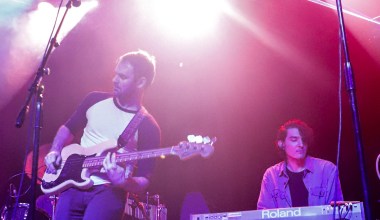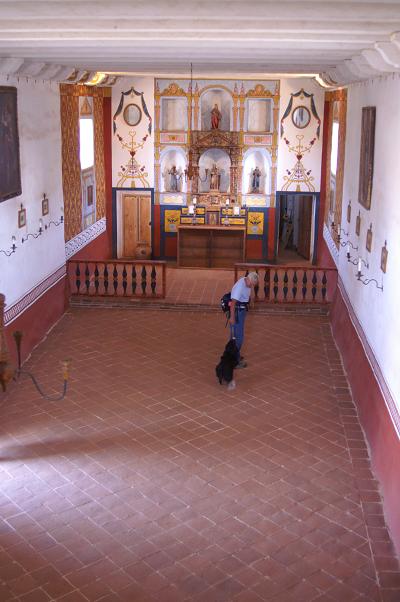
Early last Saturday morning, before most of Santa Barbara had even reached for their first cup of coffee, a team of specialized search dogs and their owners were scouring the grounds of El Presidio State Historic Park. As members of the nonprofit Institute for Canine Forensics – whose founder Adela Morris gave a public presentation about their work on Sunday to nearly 100 interested people – the doggie detective teams hoped to sniff out the location of nearly 130 historic tombs believed to be buried both inside and outside the restored chapel.
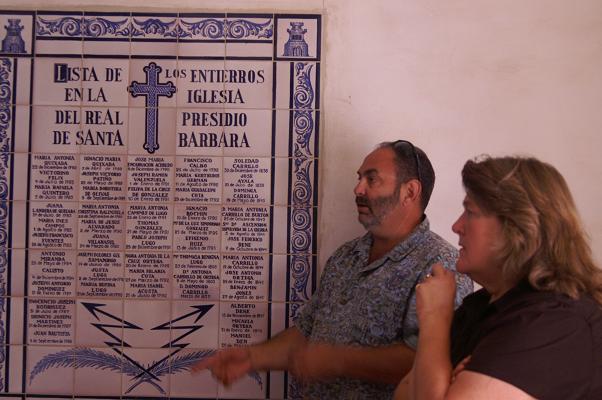
The more than three hours of searching on September 6, from about 8 a.m. until 11 a.m., yielded 14 possible burials – six scattered outside in the courtyard and eight beneath the adobe tiles inside the chapel. “There’s definitely scent coming up through the floor. There’s no doubt about that,” said Morris, who searched the chapel with her dog Rhea. “I would definitely say that there are some dead bodies here.”
But the search, said the Presidio’s archaeologist Mike Imwalle, “raised a lot more questions than it did answers.” With 51 burials recorded on historic documents as having occurred in the chapel and another 77 supposedly happening on the grounds of the Presidio – most likely somewhere near the chapel, as according to Spanish and Mexican tradition – Imwalle was hoping for more than just a possible 14 graves.
The easiest explanation would be that the burials are indeed there, but that the dogs had trouble sniffing through the chapel’s adobe floors and the hard-packed ground outside. “There’s definitely some limitations because of the floor,” said Imwalle, who explained that many of the dog scent “alerts” occurred near disturbed ground. “They tended to identify places where air is coming through the floor, which is not necessarily an indicator that there was a burial there. They’re getting the scent of bodies, but maybe they’re smelling a pool of several bodies, or scent from a body eight or nine feet away traveling underneath the floor and coming up through the open space.” Imwalle did say that most of the dogs did identify a spot where he had re-interred historic burials in the 1990s.
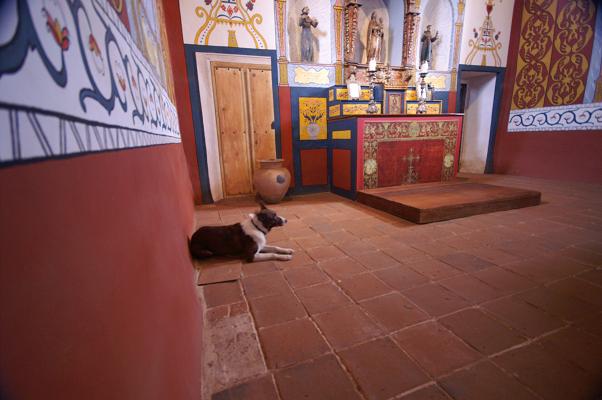
Outside, the alerts were even more sporadic, though again, one was located in an area where bodies had once been found. But because there were only six “alerts” total, Imwalle thinks that may be “an indication that we are not on the right track with the cemetery,” which his research has suggested was in the courtyard. Or, he explained, maybe it’s just that “the ground is not giving up the smell very well, which is entirely possible.” That area has a foot-and-a-half of modern dirt fill, he said, and some was actually compacted, decomposed granite, because the area used to be a parking lot.
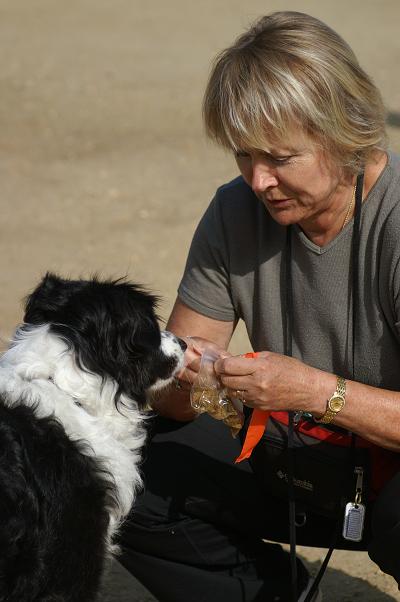
But the more interesting and surprising reason for the small amount of grave locations, at least to Imwalle, is the notion that the graves may not be there anymore. As the Presidio fell into ruins over the years, the property changed hands many times and went through various incarnations. Imwalle, who is currently in the midst of finishing his third article on the Presidio’s cemeteries, has found one document requesting that a woman be removed from her chapel grave, and that may just be one of many such requests. Could the graves have been removed in the 1800s, either by family members or property owners wanting to build over the ruins?
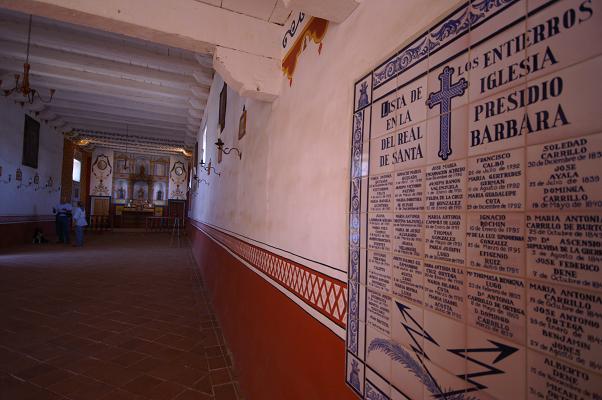
And if so, Imwalle wondered, “Did they dig up the floor, coffin by coffin? It’s kind of scary when you think about it. I’ve seen a lot of cemeteries being moved, and it’s never a real clean operation. … This is just a huge can of worms.”
To help sort out those worms, Imwalle is continuing his research. And he’ll also probably be calling the Institute for Canine Forensics back to Santa Barbara in the winter, when the weather is wetter and cooler, which allows the scent of old human remains to travel easier through the soil. He is also considering removing some of the modern topsoil to get closer to the historic ground level and give the dogs a better chance to catch a whiff of the remains.
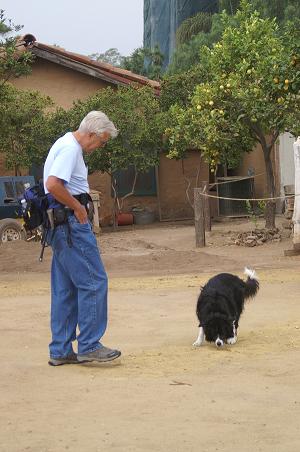
“We’d really like to come back in the winter,” agreed Morris, the institute’s founder, explaining that the hot weather and dry earth in summer is a tough time for sniffing. “Most of the time when we do cemeteries, we can literally identify every grave. [The Presidio] is pretty tricky, because it’s had lots of construction and destruction and changes and things that have moved. We’d really like to come back and do a more detailed search.” Morris said she’d also like to take advantage of being able to search the same property in two different seasons, and learn from assumedly different results.


